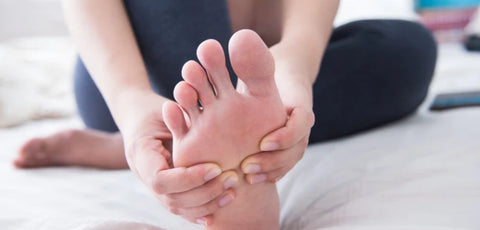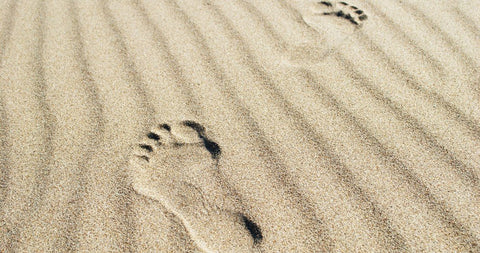
How to Identify, Understand and Manage Plantar Fasciitis
What is plantar fasciitis?
The plantar fascia is a thick band of connective tissue that runs along the base of the foot, from heel bone to toes.1 The tough, resilient structure helps it maintain the arch of your foot, absorb shock for the entire leg and stabilise the metatarsal joints during impact with the ground.2 When this tissue becomes damaged, the clinical term for the condition is Plantar Fasciitis.2
What are the symptoms of plantar fasciitis?
Pain tends to start gradually, often just in the heel, but can sometimes be felt along the whole plantar fascia.1,3 Symptoms are normally worse in the morning and mostly after, rather than during activity involving your foot.1
What are the triggers?
Plantar fasciitis can develop in people who spend a long time on their feet, either standing, walking, or practicing sports that involve a lot of running and jumping. People with high arches or those with very flat feet can also develop pain in this region.1-3
What causes plantar fasciitis?
Some of us may have feet that are more likely to suffer Plantar Fasciitis, but other risk factors include:1-3
- Regularly participating in activities like running, basketball, tennis, step aerobics and dancing
- Working in environments that require spending much of the day on your feet
- Running on hard ground and undertaking hill training
- Wearing worn out trainers that no longer support feet from hard impact
- Pregnancy, which causes temporary weight gain and hormonal muscle relaxants – causing flat feet
- A burst of activity after a period of inactivity
Top tips for avoiding and managing plantar fasciitis
Self-treatment initially involves offloading pressure from the plantar fascia to provide relief. Here are some tips that can help with prevention:1-3
- Avoid exercising on a hard surface, and resting the foot as much as possible
- Regularly stretch your calf muscles
- Choose footwear that are appropriate for your foot type, running style and purpose
- Try to lose weight if you are overweight
- Wear shoes with a medium heel (up to 3 cm) and avoid going barefoot or wearing flat shoes
- Put an ice pack or bag of frozen peas under your heel for up to 20 minutes every few hours
If the above advice doesn’t work and you’re in a lot of pain and discomfort, or finding it difficult to walk, please contact your local healthcare professional for further medical advice. They may recommend orthotics, including insoles.
RB-M-03302. Always read the instructions